Abstract
A randomized, prospective study was designed to compare a continuous with an interrupted technique for closing an abdominal incision. Five hundred seventy-one patients were randomized between the closure methods and stratified as to type of wound: clean, clean-contaminated, or contaminated. In mid-line incisions, the dehiscence rate was 2.0% (5/244) for the continuous group versus 0.9% (2/229) for the interrupted group. The difference was not statistically significant. Ventral hernias formed in 2.0% (4/201) of the continuous group vs. 0.5% (1/184) of the interrupted group. The type of wound had no influence on the results. In oblique incisions, 0% (0/39) of wounds closed continuously dehised while 2% (1/50) of incisions closed interruptedly dehised. No ventral hernias formed. Further analysis of the data indicated that dehiscence was more likely related to improper surgical technique than to the method of closure. An abdominal incision could be closed with a continuous suture in approximately half the time required for placing interrupted sutures (20 vs. 40 minutes). A continuous closure is preferred because it is more expedient and because it has the same incidence of wound disruption compared with an interrupted closure.
Full text
PDF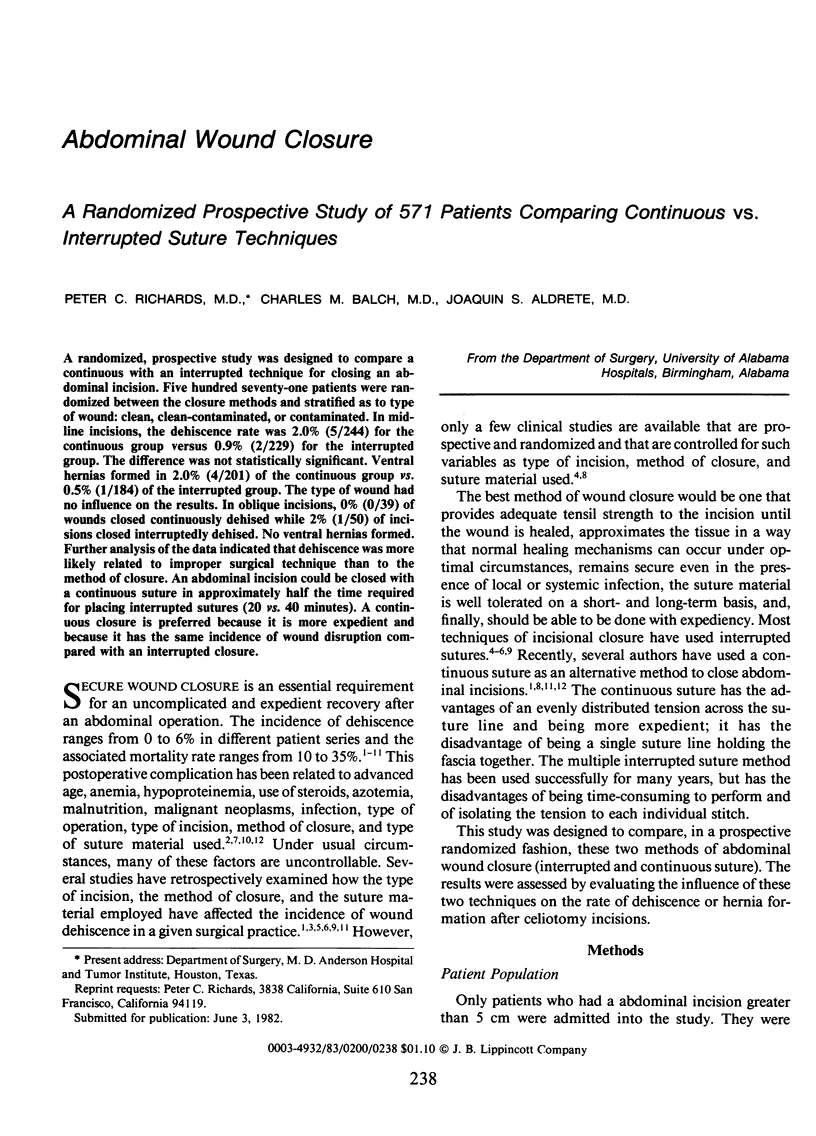
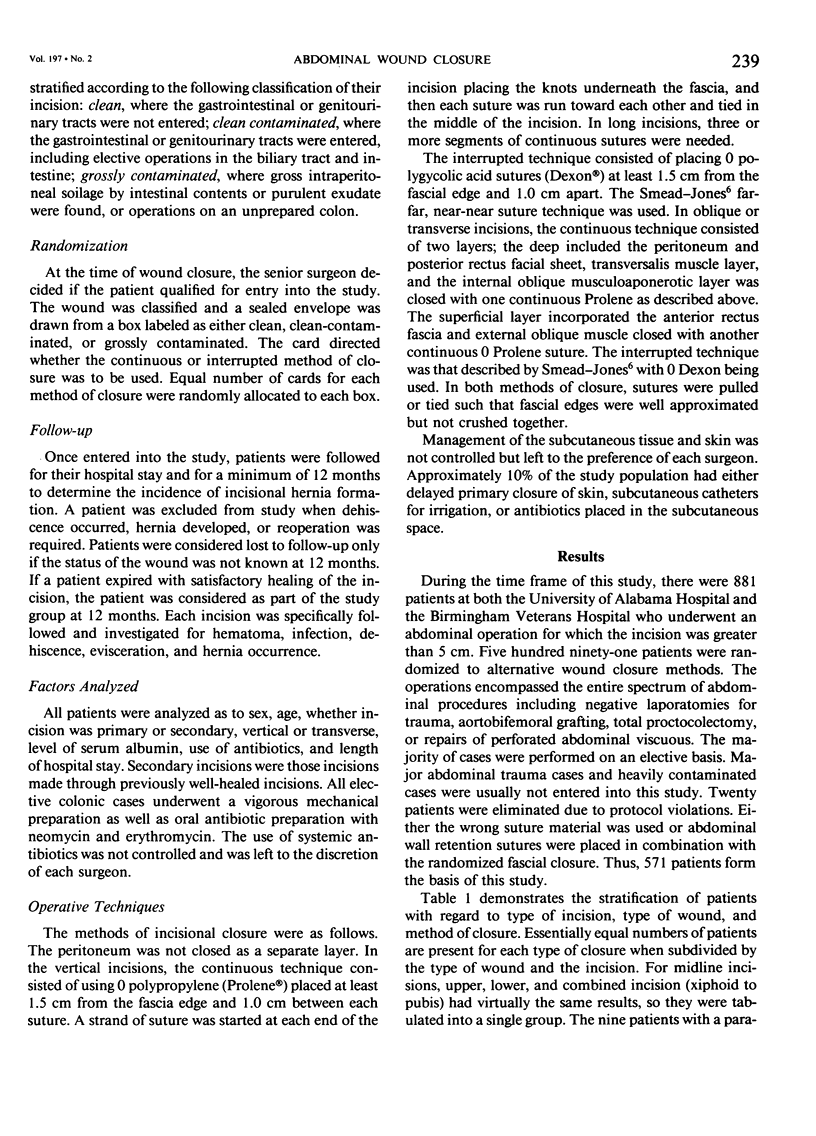
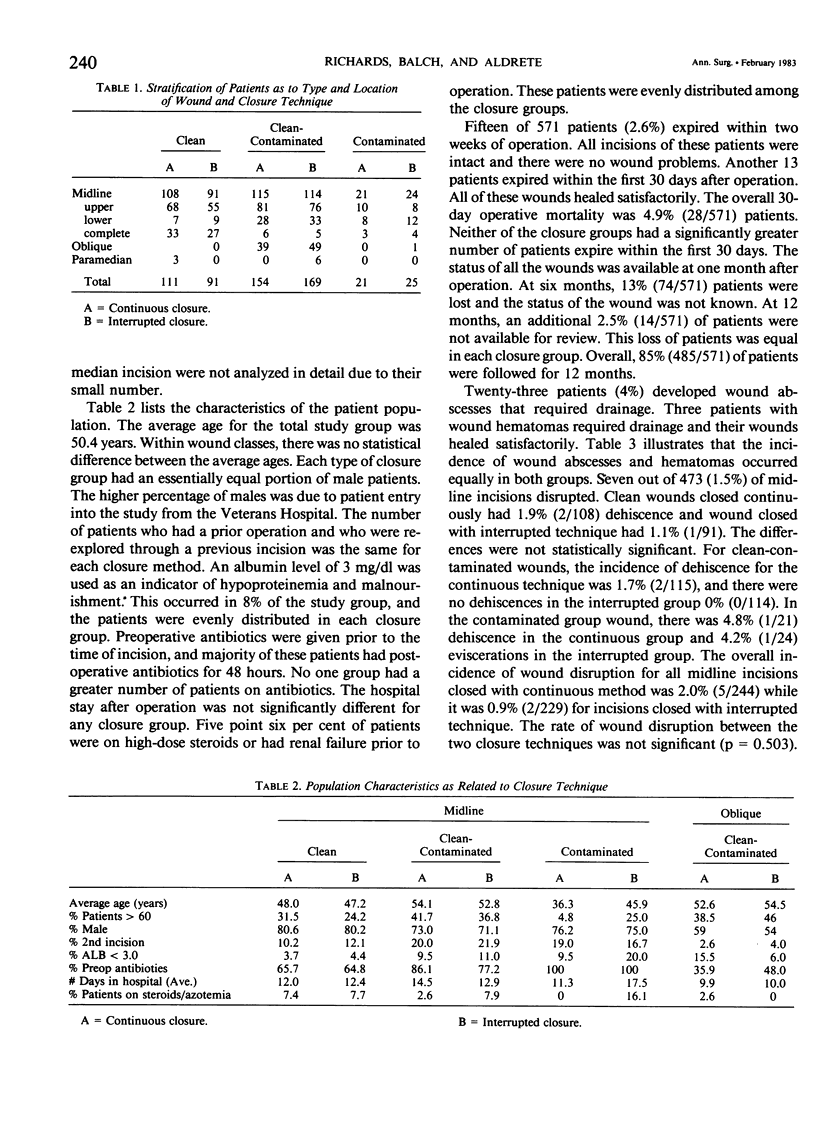
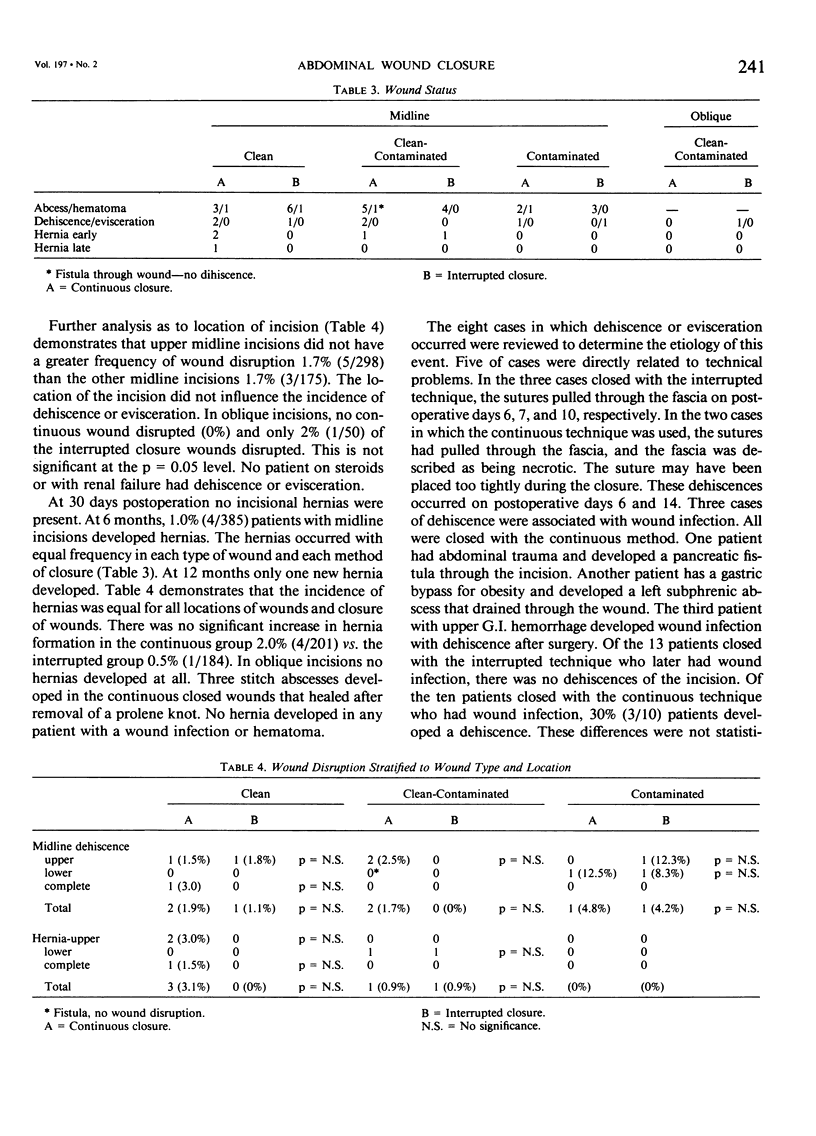
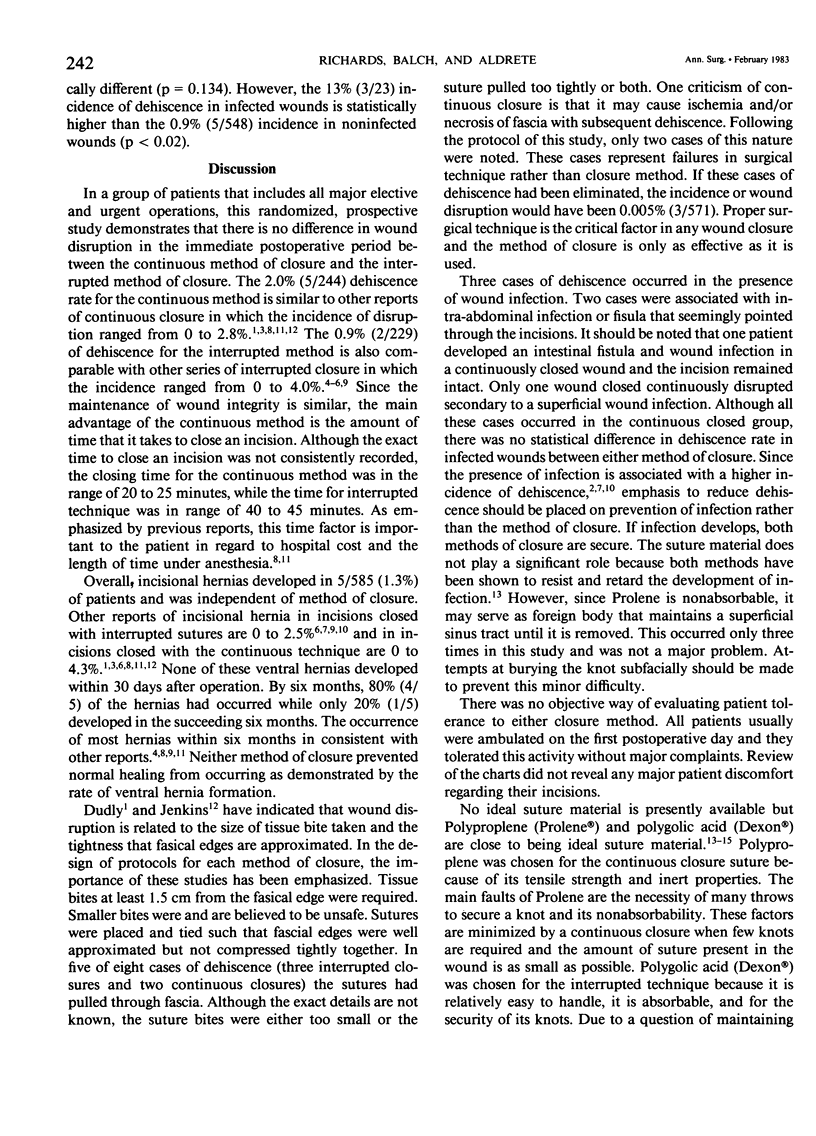
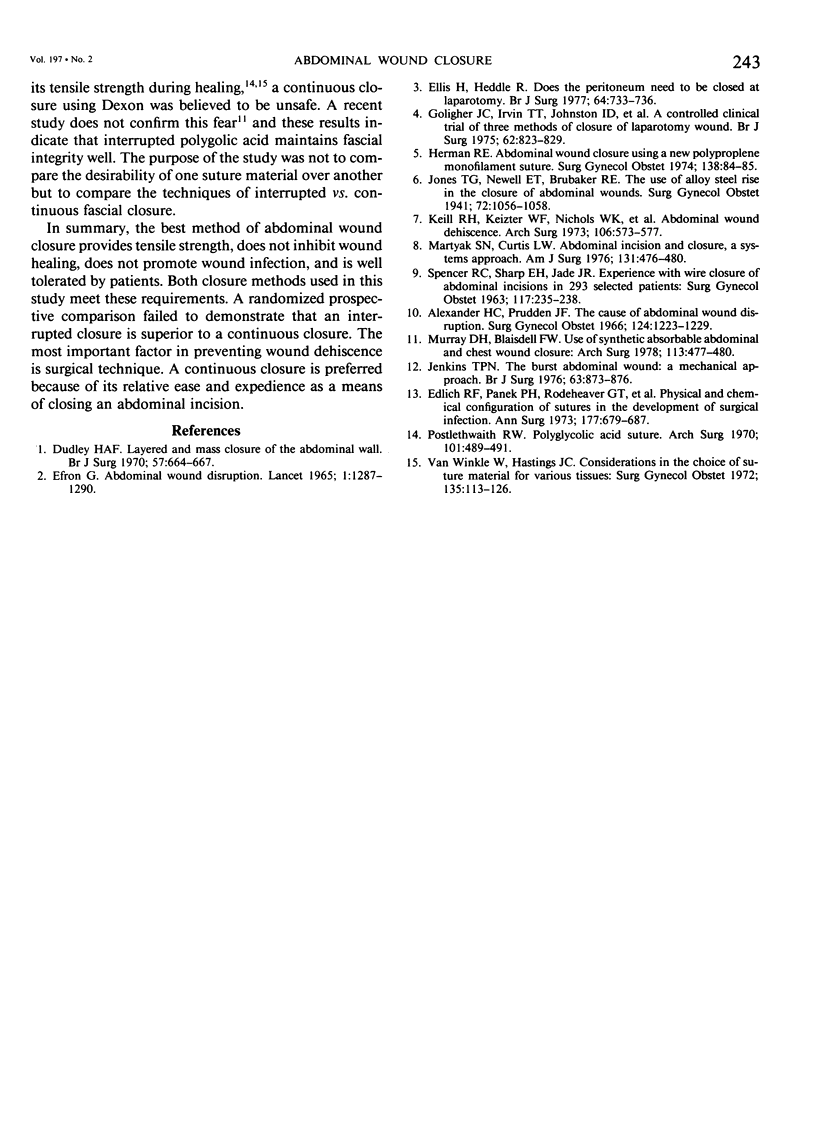
Selected References
These references are in PubMed. This may not be the complete list of references from this article.
- Alexander H. C., Prudden J. F. The causes of abdominal wound disruption. Surg Gynecol Obstet. 1966 Jun;122(6):1223–1229. [PubMed] [Google Scholar]
- Dudley H. A. Layered and mass closure of the abdominal wall. A theoretical and experimental analysis. Br J Surg. 1970 Sep;57(9):664–667. doi: 10.1002/bjs.1800570908. [DOI] [PubMed] [Google Scholar]
- EFRON G. ABDOMINAL WOUND DISRUPTION. Lancet. 1965 Jun 19;1(7399):1287–1290. doi: 10.1016/s0140-6736(65)92777-7. [DOI] [PubMed] [Google Scholar]
- Edlich R. F., Panek P. H., Rodeheaver G. T., Turnbull V. G., Kurtz L. D., Edgerton M. T. Physical and chemical configuration of sutures in the development of surgical infection. Ann Surg. 1973 Jun;177(6):679–688. doi: 10.1097/00000658-197306000-00006. [DOI] [PMC free article] [PubMed] [Google Scholar]
- Ellis H., Heddle R. Does the peritoneum need to be closed at laparotomy? Br J Surg. 1977 Oct;64(10):733–736. doi: 10.1002/bjs.1800641013. [DOI] [PubMed] [Google Scholar]
- Goligher J. C., Irvin T. T., Johnston D., De Dombal F. T., Hill G. L., Horrocks J. C. A controlled clinical trial of three methods of closure of laparotomy wounds. Br J Surg. 1975 Oct;62(10):823–829. doi: 10.1002/bjs.1800621019. [DOI] [PubMed] [Google Scholar]
- Hermann R. E. Abdominal wound closure using a new polypropylene monofilament suture. Surg Gynecol Obstet. 1974 Jan;138(1):84–86. [PubMed] [Google Scholar]
- Jenkins T. P. The burst abdominal wound: a mechanical approach. Br J Surg. 1976 Nov;63(11):873–876. doi: 10.1002/bjs.1800631110. [DOI] [PubMed] [Google Scholar]
- Keill R. H., Keitzer W. F., Nichols W. K., Henzel J., DeWeese M. S. Abdominal wound dehiscence. Arch Surg. 1973 Apr;106(4):573–577. doi: 10.1001/archsurg.1973.01350160185032. [DOI] [PubMed] [Google Scholar]
- Martyak S. N., Curtis L. E. Abdominal incision and closure. A systems approach. Am J Surg. 1976 Apr;131(4):476–480. doi: 10.1016/0002-9610(76)90160-4. [DOI] [PubMed] [Google Scholar]
- Murray D. H., Jr, Blaisdell F. W. Use of synthetic absorbable sutures for abdominal and chest wound closure. Experience with 650 consecutive cases. Arch Surg. 1978 Apr;113(4):477–480. doi: 10.1001/archsurg.1978.01370160135023. [DOI] [PubMed] [Google Scholar]
- Postlethwait R. W. Polyglycolic acid surgical suture. Arch Surg. 1970 Oct;101(4):489–494. doi: 10.1001/archsurg.1970.01340280041011. [DOI] [PubMed] [Google Scholar]
- SPENCER F. C., SHARP E. H., JUDE J. R. EXPERIENCES WITH WIRE CLOSURE OF ABDOMINAL INCISIONS IN 293 SELECTED PATIENTS. Surg Gynecol Obstet. 1963 Aug;117:235–238. [PubMed] [Google Scholar]
- Van Winkle W., Jr, Hastings J. C. Considerations in the choice of suture material for various tissues. Surg Gynecol Obstet. 1972 Jul;135(1):113–126. [PubMed] [Google Scholar]


